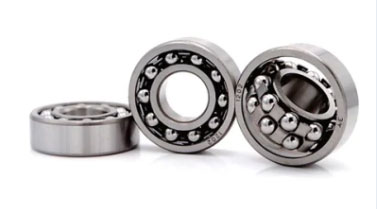Home / News / Hybrid Spindle Bearings: Revolutionizing Precision Engineering and High-Speed Applications
Hybrid Spindle Bearings: Revolutionizing Precision Engineering and High-Speed Applications
Introduction
Spindle bearings play a crucial role in various industrial applications, particularly in machine tools, where precision, reliability, and high-speed operation are of utmost importance. With the advent of advanced materials and engineering techniques, hybrid spindle bearings have emerged as the preferred choice for demanding applications. This article will explore the properties, benefits, and applications of hybrid spindle bearings in modern industries.

Hybrid Spindle Bearings: A Perfect Blend of Materials
Hybrid spindle bearings are a unique combination of steel rings and ceramic rolling elements, such as silicon nitride or zirconium dioxide. This fusion of materials offers the best of both worlds: the toughness and durability of steel, along with the lightweight, high-speed capabilities, and low friction of ceramics.
Benefits of Hybrid Spindle Bearings
The use of hybrid spindle bearings in various applications offers numerous advantages, including:
High-Speed Performance: Ceramic materials used in hybrid spindle bearings have a lower density than steel, resulting in reduced centrifugal forces and allowing for higher operational speeds.
Enhanced Precision: Ceramic rolling elements exhibit lower thermal expansion compared to steel, leading to improved dimensional stability and reduced thermal distortion, ensuring consistent precision during high-speed operations.
Extended Service Life: The low friction and wear characteristics of ceramic materials reduce the overall wear rate, extending the service life of hybrid spindle bearings and minimizing downtime for maintenance.
Reduced Lubrication Requirements: Hybrid spindle bearings have lower friction and reduced adhesive wear, which translate to lower lubrication requirements and longer lubricant life, further reducing maintenance costs.
Increased Stiffness: Ceramic rolling elements are stiffer than steel, resulting in increased bearing stiffness, leading to improved machining accuracy and stability.
Applications of Hybrid Spindle Bearings
Hybrid spindle bearings have a wide range of applications across various industries, including:
Machine Tools: Hybrid spindle bearings are widely used in precision machine tools such as CNC machining centers, milling machines, and grinding machines. Their high-speed capabilities, precision, and durability make them ideal for demanding machining applications.
Aerospace Industry: The lightweight, low friction, and high-speed performance of hybrid spindle bearings make them suitable for use in aerospace applications, such as in aircraft engines and high-speed turbines.
Electric Motors and Generators: Hybrid spindle bearings are used in electric motors and generators due to their ability to operate at high speeds with low friction, resulting in increased efficiency and reduced energy consumption.
Medical Equipment: The precision and reliability of hybrid spindle bearings make them suitable for use in medical equipment, such as surgical robots and high-speed dental handpieces.
High-Speed Spindles: Hybrid spindle bearings are perfect for use in high-speed spindles for applications such as ultra-precision machining, micro-machining, and high-speed milling.
Conclusion
Hybrid spindle bearings have revolutionized precision engineering and high-speed applications by combining the durability of steel with the high-performance capabilities of ceramic materials. Their numerous benefits, such as high-speed performance, enhanced precision, extended service life, and reduced lubrication requirements, make them an ideal choice for a wide range of industries and applications. As the demand for more efficient and precise machinery continues to grow, hybrid spindle bearings will undoubtedly play a pivotal role in meeting these needs, driving innovation and progress in various sectors.
- Previous: Spindle Bearing Preload Tool: Ensuring Precision and Prolonging Bearing Life
- Next: The Spindle Bearing Preload Adjustment Tool: A Key Innovation for Precision and Reliability in Machi













